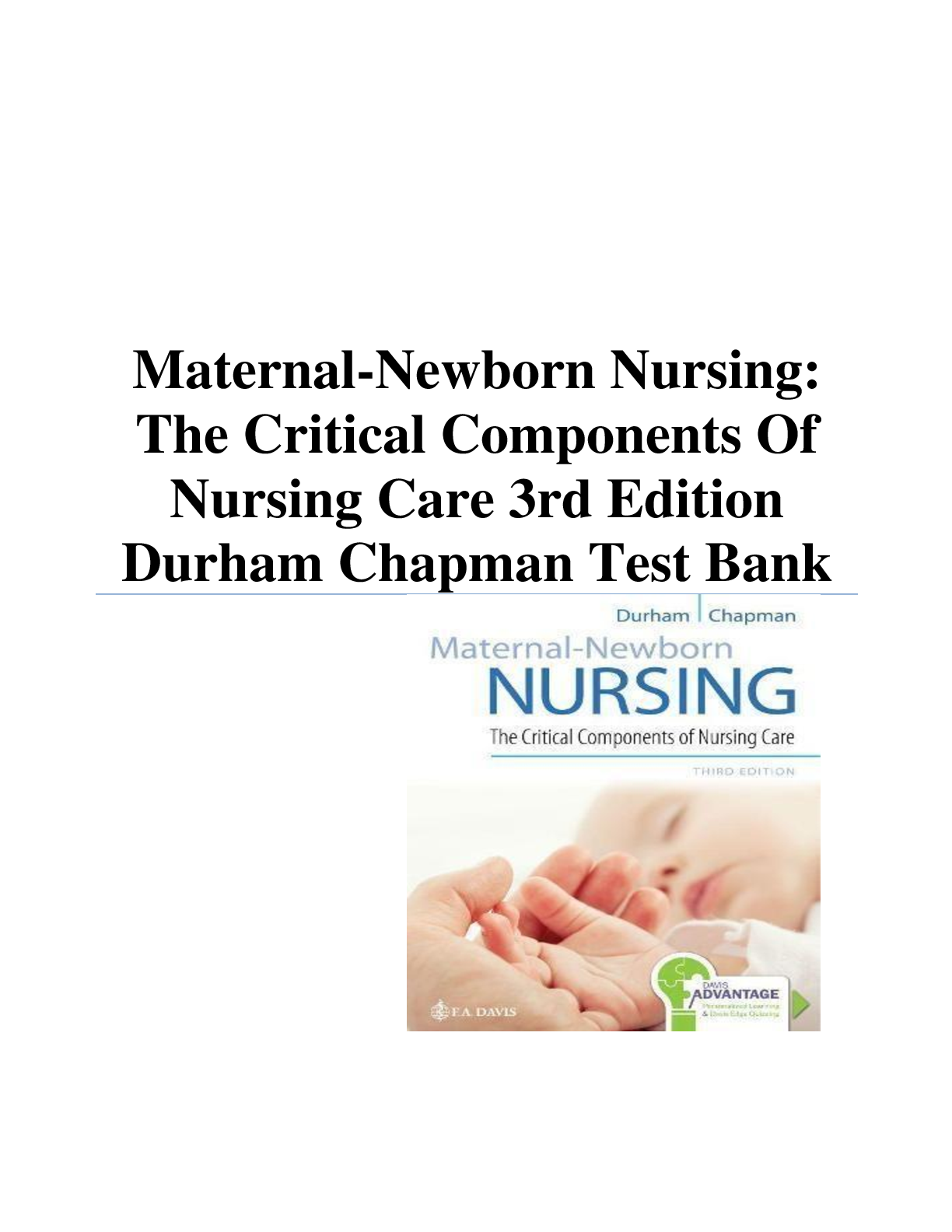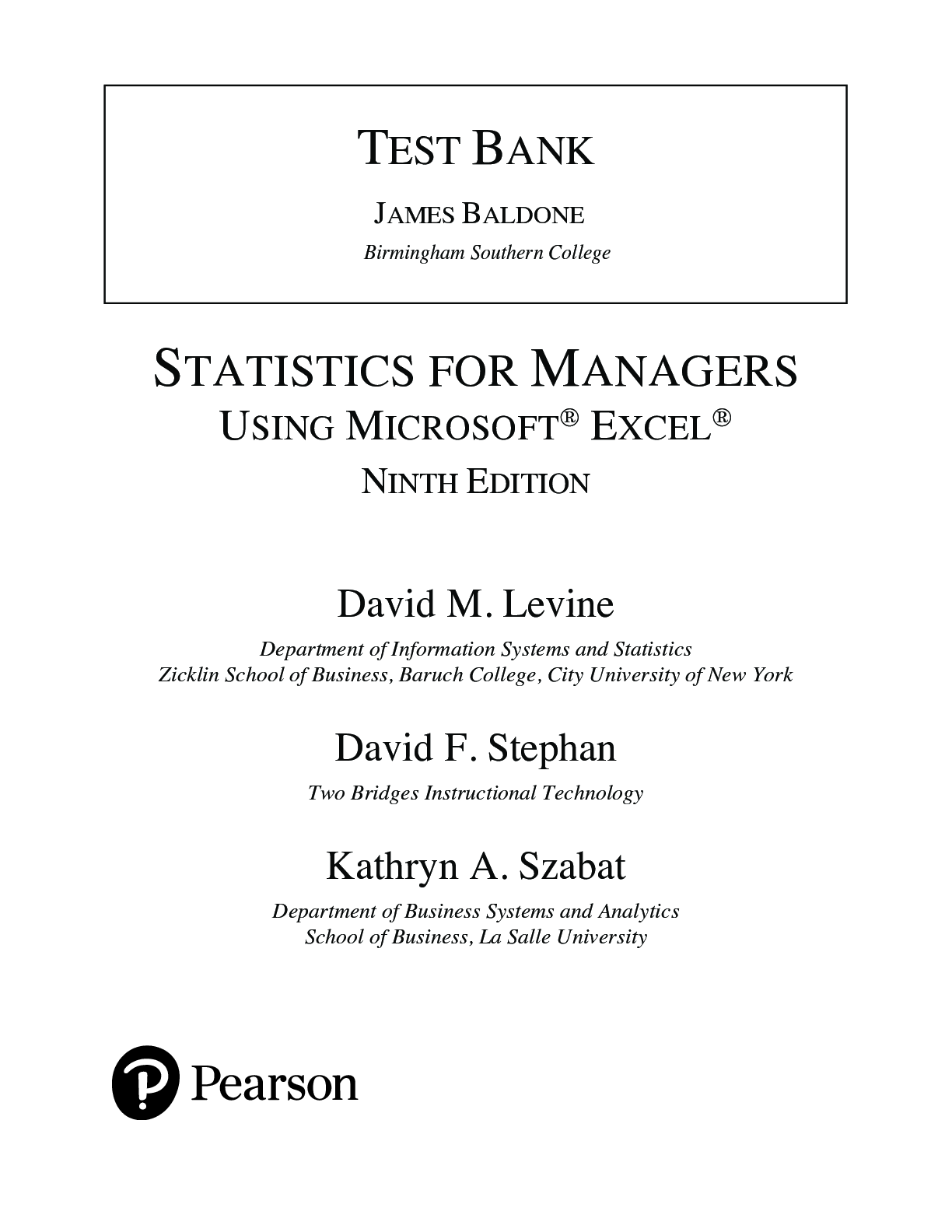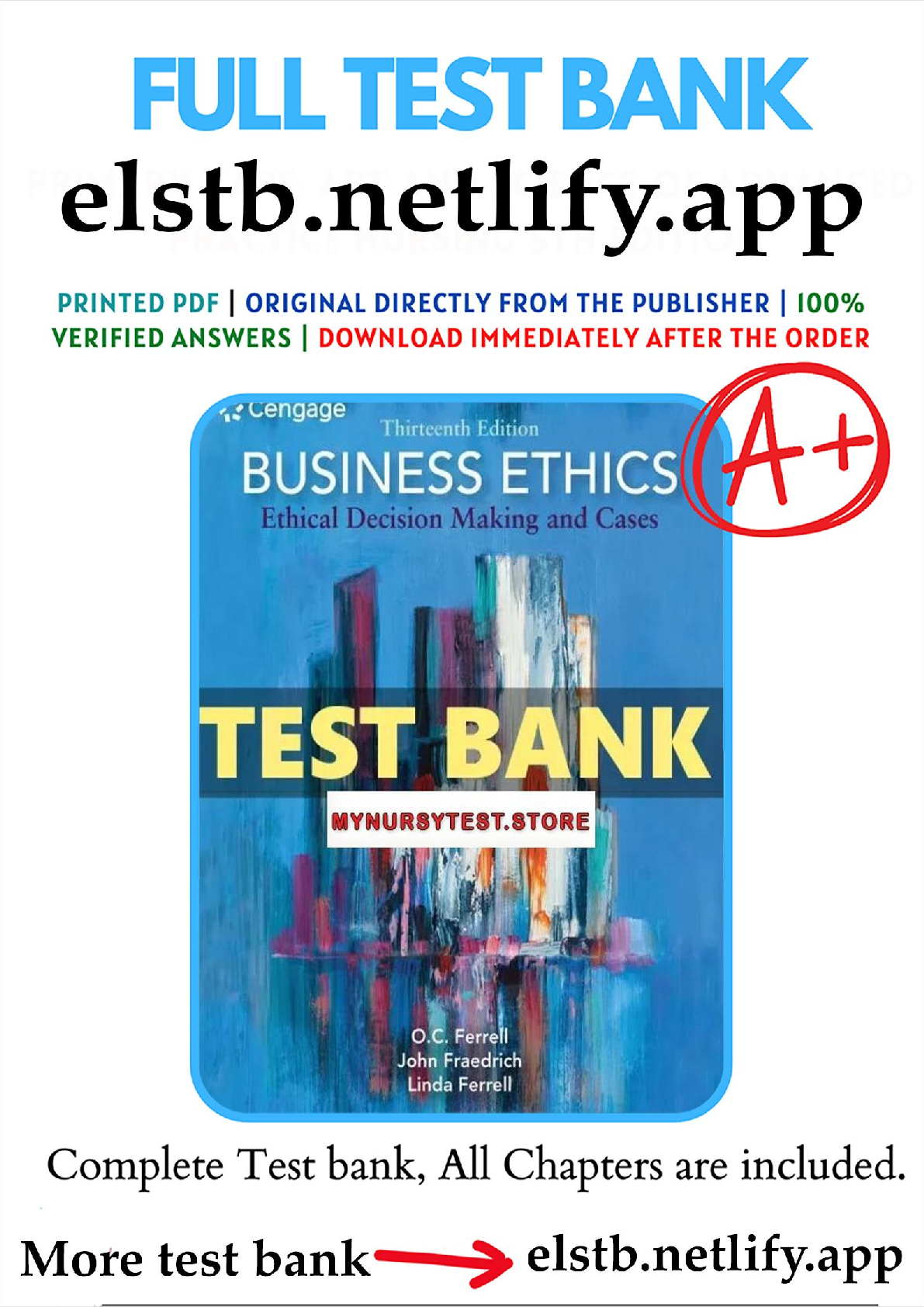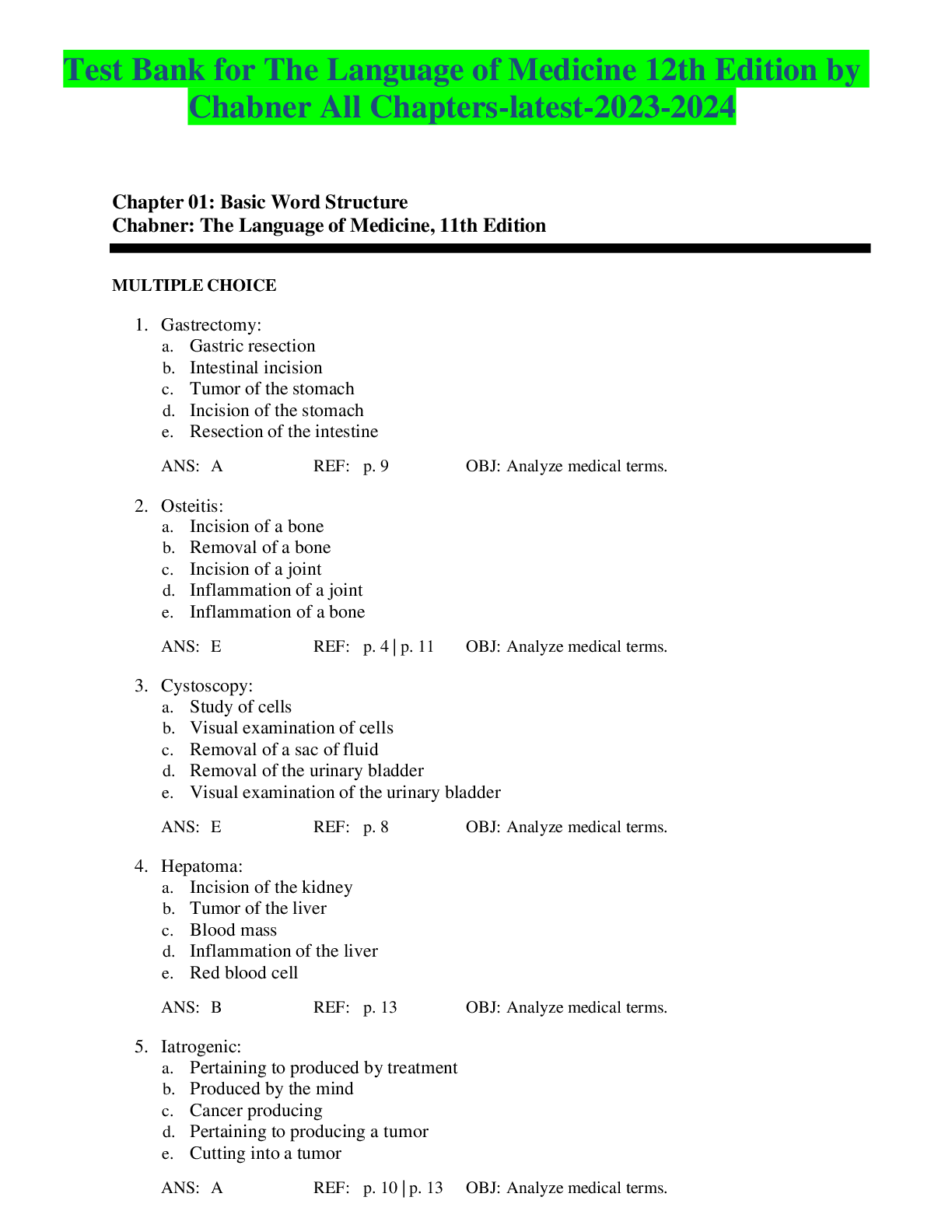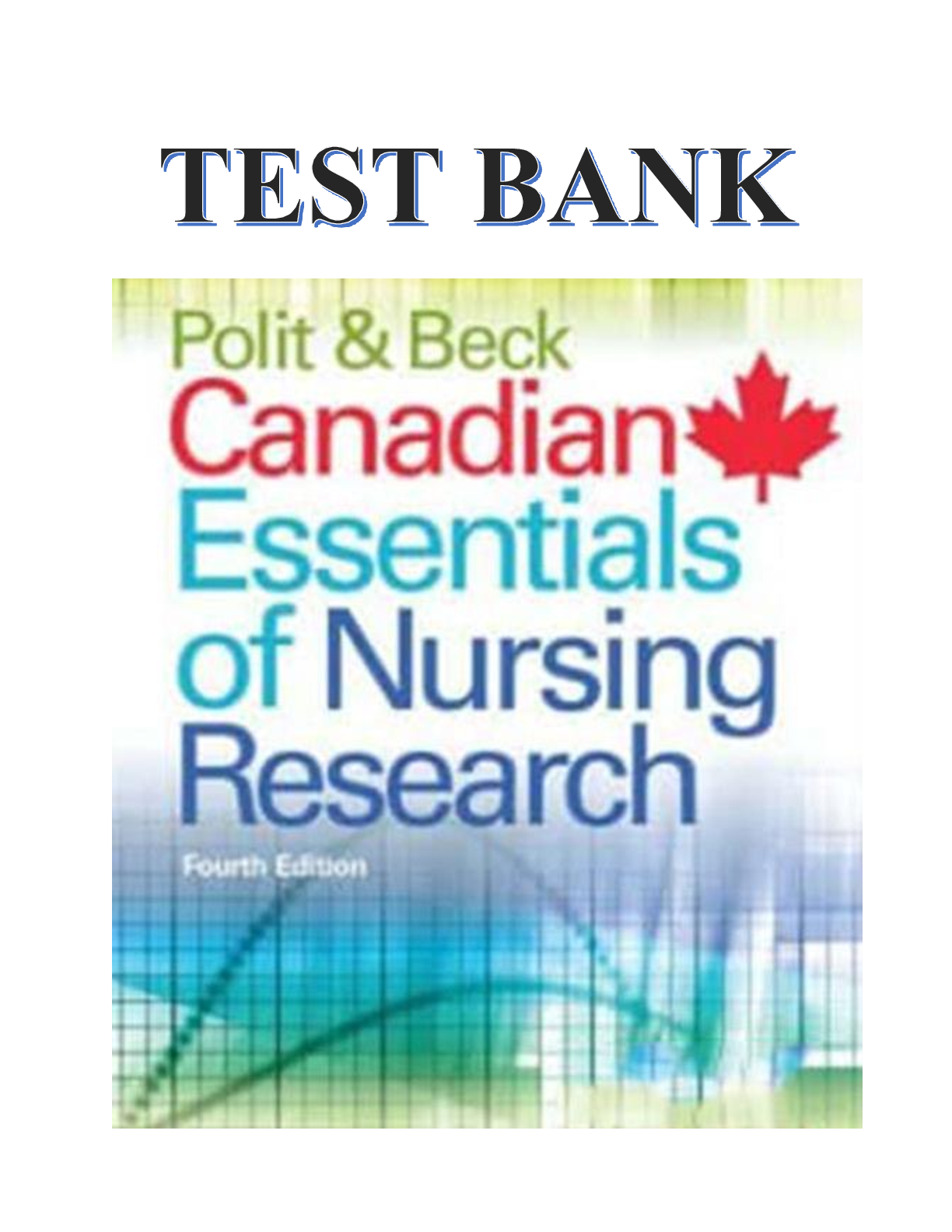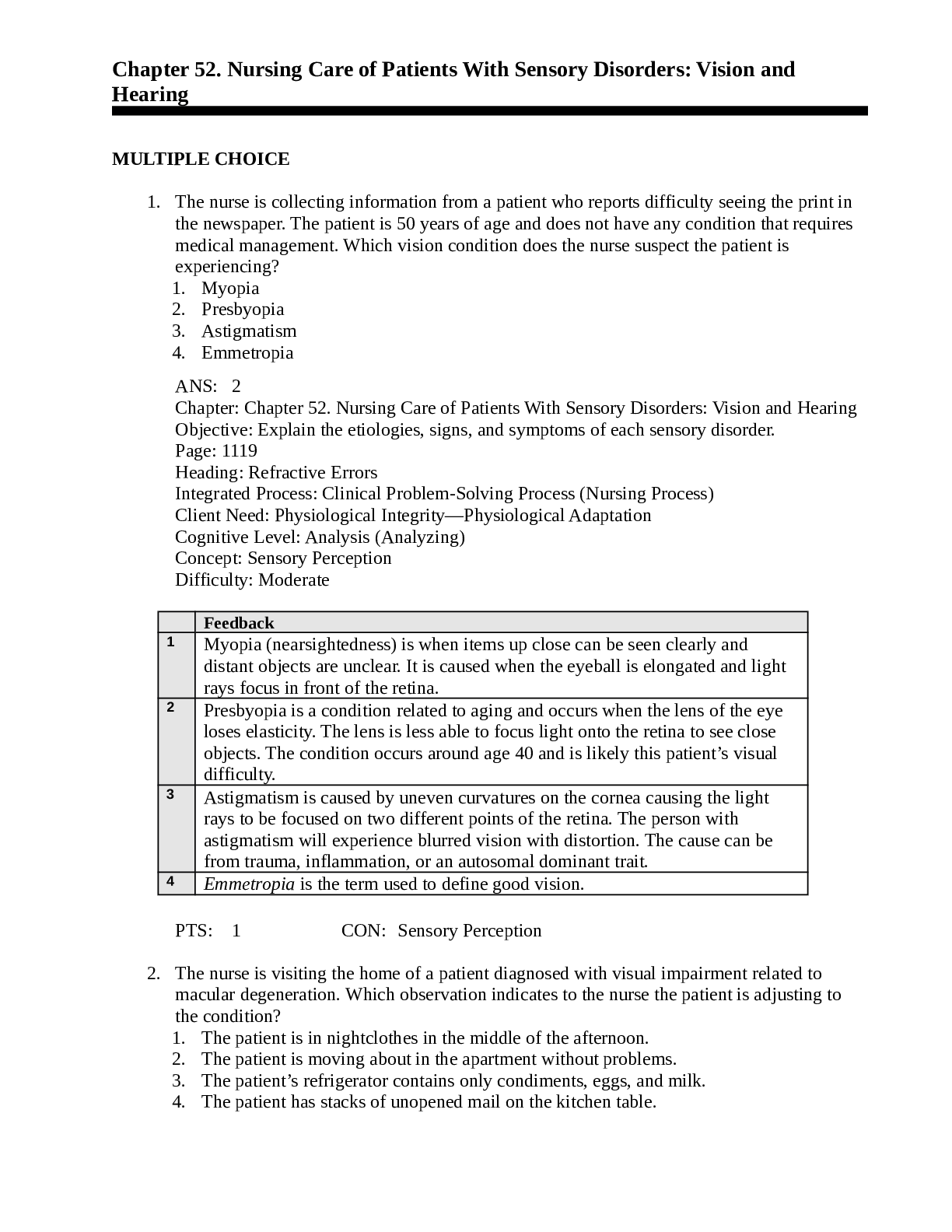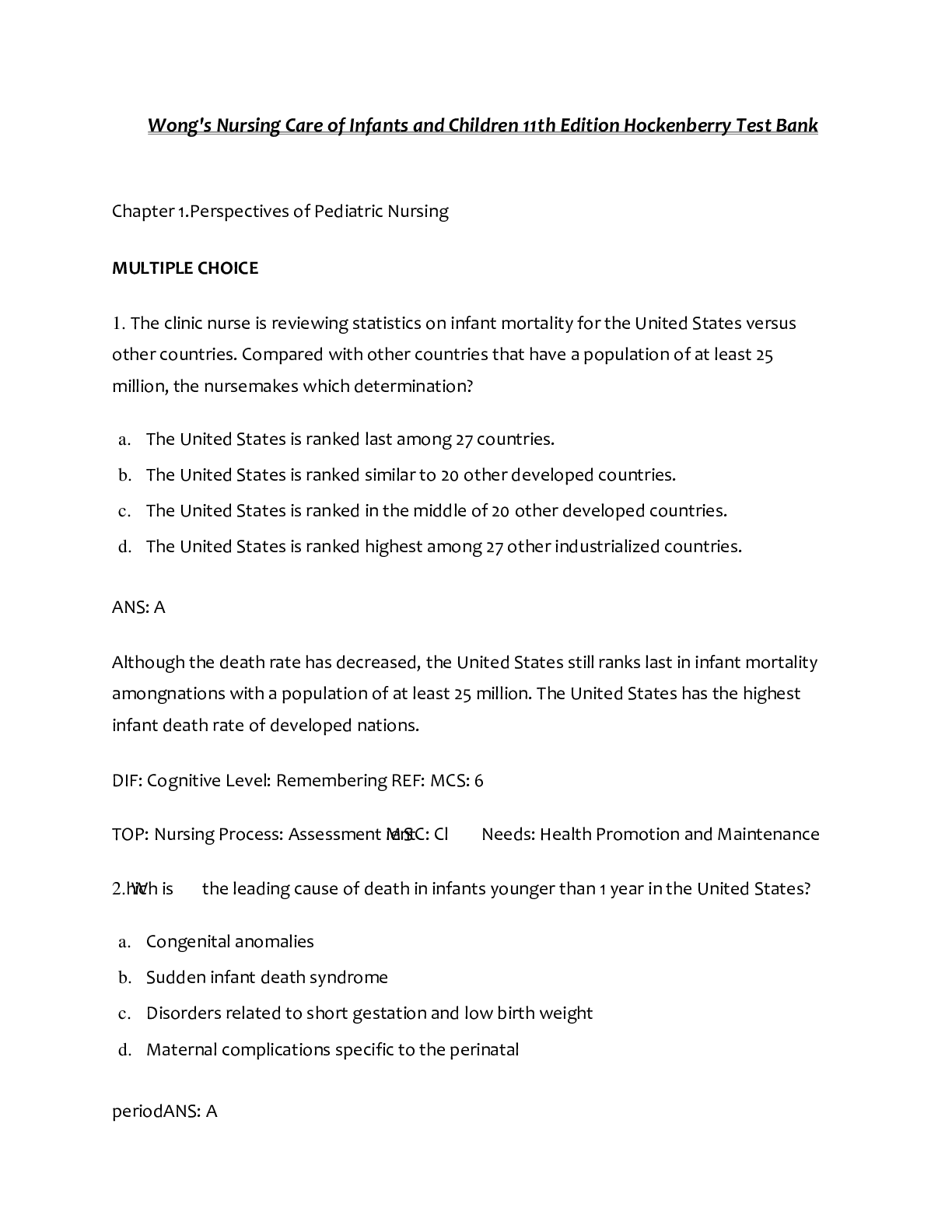*NURSING > TEST BANK > Complete Test Bank for Wong’s Nursing Care of Infants and Children 12th Edition ( 2024 ) by Marily (All)
Complete Test Bank for Wong’s Nursing Care of Infants and Children 12th Edition ( 2024 ) by Marilyn J. Hockenberry,Elizabeth A. Duffy, Karen Gibbs All Chapters 1-34! ALREADY RATED A+
Document Content and Description Below
Complete Test Bank for Wong’s Nursing Care of Infants and Children 12th Edition ( 2024 ) by Marilyn J. Hockenberry,Elizabeth A. Duffy, Karen Gibbs All Chapters 1-34! ALREADY RATED A+Chapter 01: Pers... pectives of Pediatric Nursing Hockenberry: Wong’s Nursing Care of Infants and Children, 12th Edition MULTIPLE CHOICE 1. What is the major cause of death for children in the United States? a. Heart disease b. Childhood cancer c. Injuries d. Congenital anomalies ANS: C Unintentional injuries (accidents) are the leading cause of death after age 1 year through adolescence. The leading cause of death for those younger than 1 year is congenital anomalies, and childhood cancers and heart disease cause a significantly lower percentage of deaths in children older than 1 year of age. DIF: Cognitive Level: Understanding TOP: Nursing Process: Planning MSC: Client Needs: Health Promotion and Maintenance 2. Parents of a hospitalized toddler ask the nurse, “What is meant by family-centered care?” The nurse should respond with which statement? a. Family-centered care reduces the effect of cultural diversity on the family. b. Family-centered care encourages family dependence on the health care system. c. Family-centered care recognizes that the family is the constant in a child’s life. d. Family-centered care avoids expecting families to be part of the decision-making process. ANS: C The three key components of family-centered care are respect, collaboration, and support. Familycentered care recognizes the family as the constant in the child’s life. The family should be enabled and empowered to work with the health care system and is expected to be part of the decision-making process. The nurse should also support the family’s cultural diversity, not reduce its effect. DIF: Cognitive Level: Applying TOP: Nursing Process: Implementation MSC: Client Needs: Health Promotion and Maintenance 3. Evidence-based practice (EBP), a decision-making model, is best described as which? a. Using information in textbooks to guide care b. Combining knowledge with clinical experience and intuition c. Using a professional code of ethics as a means for decision making d. Gathering all evidence that applies to the child’s health and family situation ANS: B EBP helps focus on measurable outcomes; the use of demonstrated, effective interventions; and questioning the best approach. EBP involves decision making based on the integration of the best research evidence combined with clinical expertise and patient values. DIF: Cognitive Level: Remembering TOP: Nursing Process: Planning MSC: Client Needs: Safe and Effective Care Environment 4. The nurse is talking to a group of parents of school-age children at an after-school program about childhood health problems. Which statement should the nurse include in the teaching? a. Childhood obesity is the most common nutritional problem among children. b. Immunization rates are the same among children of different races and ethnicity. c. Dental caries is not a problem commonly seen in children since the introduction of fluorinated water. d. Mental health problems are typically not seen in school-age children but may be diagnosed in adolescents. ANS: A When teaching parents of school-age children about childhood health problems, the nurse should include information about childhood obesity because it is the most common problem among children and is associated with type 2 diabetes. Teaching parents about ways to prevent obesity is important to include. Immunization rates differ depending on the child’s race and ethnicity; dental caries continues to be a common chronic disease in childhood; and mental health problems are seen in children as young as school age, not just in adolescents. DIF: Cognitive Level: Applying TOP: Integrated Process: Teaching/Learning MSC: Client Needs: Health Promotion and Maintenance 5. The nurse is planning care for a hospitalized preschool-aged child. Which should the nurse plan to ensure atraumatic care? a. Limit explanation of procedures because the child is preschool aged. b. Ask that all family members leave the room when performing procedures. c. Allow the child to choose the type of juice to drink with the administration of oral medications. d. Explain that EMLA cream cannot be used for the morning lab draw because there is not time for it to be effective. ANS: C The overriding goal in providing atraumatic care is first, do no harm. Allowing the child, a choice of juice to drink when taking oral medications provides the child with a sense of control. The preschool child should be prepared before procedures, so limiting explanations of procedures would increase anxiety. The family should be allowed to stay with the child during procedures, minimizing stress. Lidocaine/prilocaine (EMLA) cream is a topical local anesthetic. The nurse should plan to use the prescribed cream in time for morning laboratory draws to minimize pain. DIF: Cognitive Level: Applying TOP: Nursing Process: Planning MSC: Client Needs: Health Promotion and Maintenance 6. Which situation denotes a nontherapeutic nurse–patient–family relationship? a. The nurse is planning to read a favorite fairy tale to a patient. b. During shift report, the nurse is criticizing parents for not visiting their child. c. The nurse is discussing with a fellow nurse the emotional draw to a certain patient. d. The nurse is working with a family to find ways to decrease the family’s dependence on health care providers. [Show More]
Last updated: 1 day ago
Preview 3 out of 5 pages

Loading document previews ...
Buy this document to get the full access instantly
Instant Download Access after purchase
Buy NowInstant download
We Accept:

Reviews( 0 )
$12.50
Can't find what you want? Try our AI powered Search
Document information
Connected school, study & course
About the document
Uploaded On
Jun 07, 2025
Number of pages
5
Written in
Additional information
This document has been written for:
Uploaded
Jun 07, 2025
Downloads
0
Views
7


